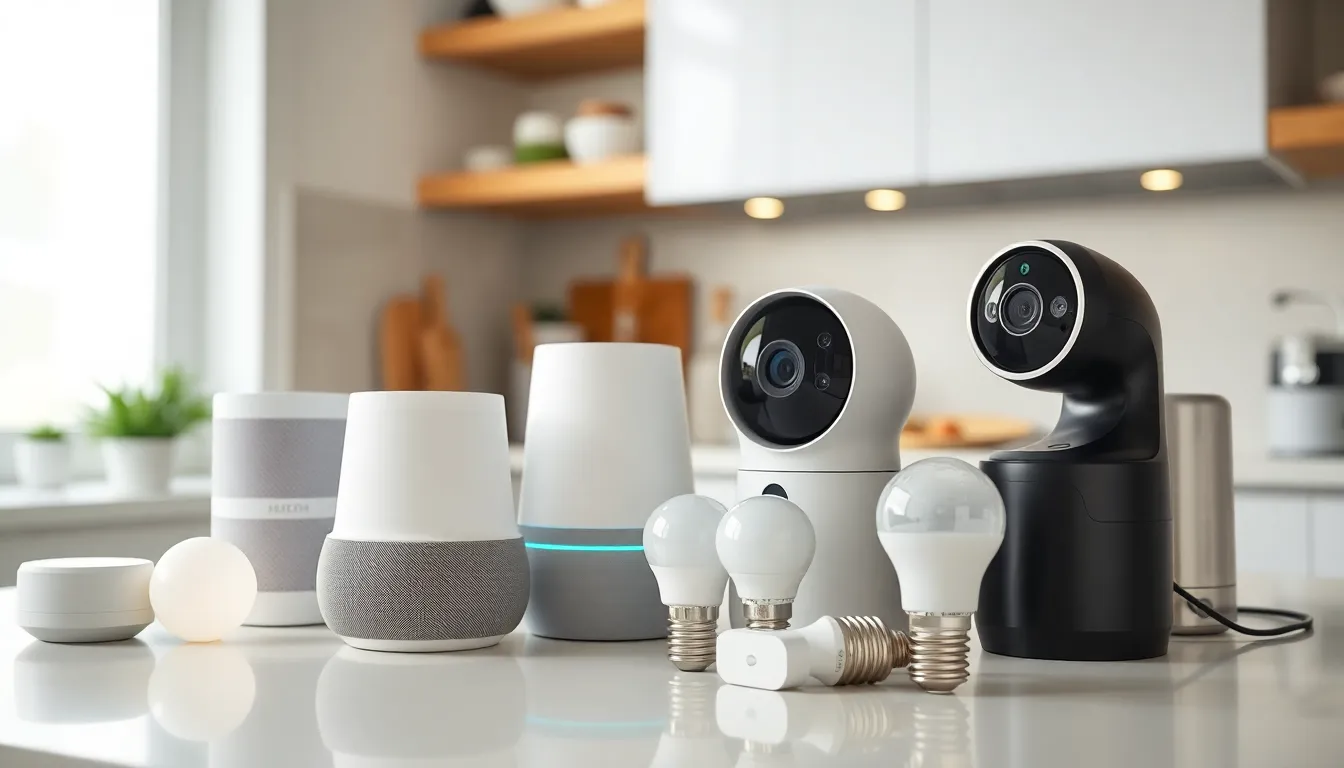Table of Contents
ToggleIn a world where toasters can chat with refrigerators and smart fridges can order groceries, the Internet of Things (IoT) is more than just a buzzword—it’s a reality. But what happens when these clever devices can’t understand each other? Enter IoT interoperability, the unsung hero that ensures your smart home doesn’t turn into a scene from a sci-fi comedy.
Understanding IoT Interoperability
IoT interoperability represents the ability of various devices to communicate and operate seamlessly within a network. This functionality enhances user experience and optimizes smart home environments.
Definition and Importance
IoT interoperability refers to the capability of different IoT devices and systems to connect and interact without hitches. Effective interoperability ensures that devices, such as smart speakers and security cameras, can share data and work collaboratively. Its significance lies in creating a cohesive smart ecosystem that delivers optimal performance and convenience. In scenarios where devices lack interoperability, users experience frustration due to inefficiencies and incompatibilities. A unified network fosters automation, enhancing overall functionality and user satisfaction.
Key Concepts and Terminology
Understanding IoT interoperability involves familiarizing oneself with specific terms and concepts. Protocols play a crucial role, as they define the rules for data exchange between devices. Common protocols include MQTT, CoAP, and HTTP, which facilitate communication across various platforms. Standards are equally important, including frameworks like IEEE 802.15.4 and Zigbee, which ensure devices can function together despite differing manufacturers. Integration signifies the process of combining multiple systems to create a singular, cohesive unit. Recognizing these concepts helps elucidate the complexities of making smart devices work harmoniously within a connected environment.
Current Challenges in IoT Interoperability

IoT interoperability faces significant challenges that hinder seamless communication among devices. These challenges impact the effectiveness of smart home environments.
Fragmentation of Standards
Fragmentation of standards complicates device compatibility within IoT ecosystems. Various manufacturers use different protocols, creating barriers to effective communication. As numerous devices rely on distinct standards, integration becomes cumbersome. The lack of unified protocols drives inconsistency, leading to inefficiencies in operations. Some common protocols include Zigbee, Z-Wave, and Wi-Fi; each operates within its framework. Efforts such as the Open Connectivity Foundation and the Connectivity Standards Alliance aim to address these issues. However, progress remains slow, leaving many devices unable to communicate effectively across networks.
Security Concerns
Security concerns present another critical challenge in IoT interoperability. The increasing number of connected devices broadens the attack surface for cyber threats. When different devices connect, vulnerabilities in one can compromise others. Each device may have varying security protocols, creating inconsistencies in data protection. Breaches can lead to unauthorized access and data theft, posing risks to user privacy. Manufacturers often prioritize functionality over security, resulting in overlooked vulnerabilities. Implementing robust security measures ensures devices communicate securely while protecting user data. Building trust in IoT ecosystems requires addressing these security issues systematically.
Best Practices for Achieving IoT Interoperability
Achieving effective IoT interoperability requires strategic approaches. Emphasizing protocols and frameworks plays a crucial role in ensuring seamless communication.
Protocols and Frameworks
Employing standard communication protocols fosters compatibility among devices. MQTT, CoAP, and HTTP are widely used to facilitate interactions in smart environments. Selecting appropriate protocols based on specific application requirements significantly impacts interoperability. Frameworks, such as those set by the IEEE and the Connectivity Standards Alliance, offer guidelines that promote collaborative development. Adopting these standards can reduce fragmentation, making it simpler for devices from different manufacturers to connect. Consistency in protocol usage across devices enhances overall network reliability and user experience.
Data Integration Techniques
Utilizing effective data integration techniques ensures coherent communication between devices. APIs serve as fundamental tools, enabling disparate systems to exchange information effortlessly. Implementing data conversion methods allows for the transformation of varying data formats into a unified structure, enhancing compatibility. Leveraging middleware solutions can streamline interactions by providing a common platform for data exchange. Furthermore, incorporating edge computing optimizes data processing, reducing latency in real-time applications. Prioritizing these techniques helps create a cohesive ecosystem that supports diverse IoT applications.
Future of IoT Interoperability
Emerging trends in IoT interoperability focus on increased standardization and the push for universal protocols. Companies are collaborating to create frameworks that support seamless communication across devices from different manufacturers. New protocols like Matter play a crucial role in this effort, enabling devices from various ecosystems to function together. Cloud-based solutions also contribute by offering centralized management for diverse IoT networks. Advances in edge computing further enhance interoperability by allowing data processing closer to the devices, reducing latency and improving response times.
AI and machine learning significantly impact the development of IoT interoperability. They enable devices to learn from user interactions and environmental conditions, leading to smarter decision-making processes. Predictive analytics helps optimize device performance by adjusting operations based on data patterns. With AI, devices can troubleshoot and resolve connections issues autonomously, streamlining user experiences. Machine learning algorithms analyze communication patterns, enhancing compatibility and efficiency among devices over time. As these technologies evolve, they strengthen the foundation for a more interconnected and responsive IoT ecosystem.
Conclusion
The future of IoT interoperability holds immense potential for transforming smart environments. As devices become more interconnected, the emphasis on standardization and universal protocols will drive seamless communication. Emerging technologies like AI and machine learning will further enhance device compatibility and efficiency, paving the way for smarter ecosystems.
Addressing current challenges such as fragmentation and security will be crucial in building trust and ensuring user safety. By adopting best practices and collaborating across industries, stakeholders can create a cohesive network that maximizes the benefits of IoT. The journey toward true interoperability is ongoing, but the advancements on the horizon promise a more integrated and efficient future for smart living.




